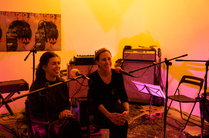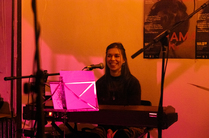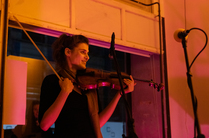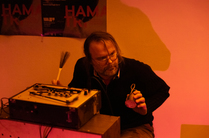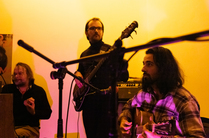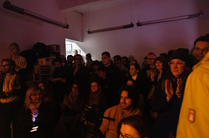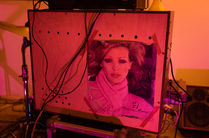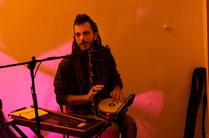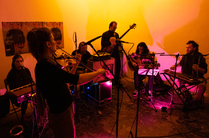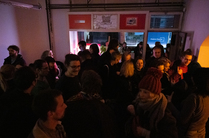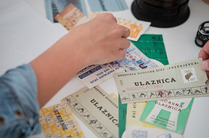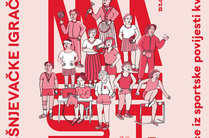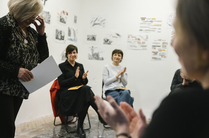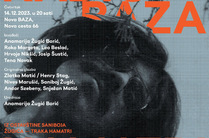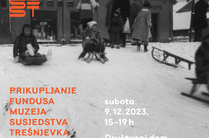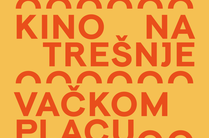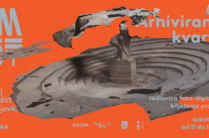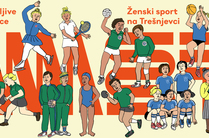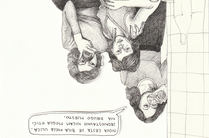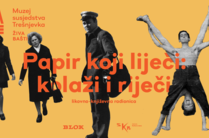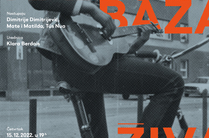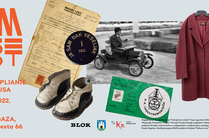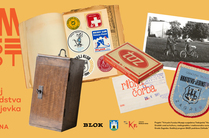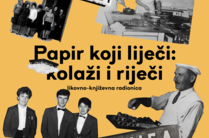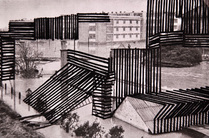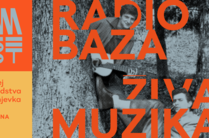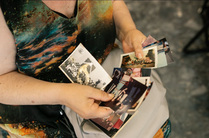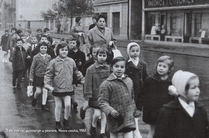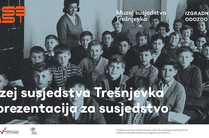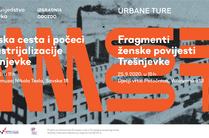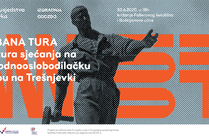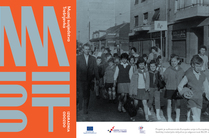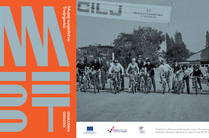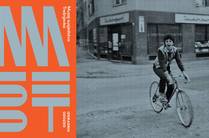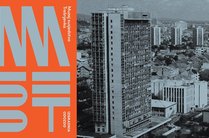FROM THE HERITAGE OF SANIBOJ ŽUGIĆ: HAMATRI TAPE
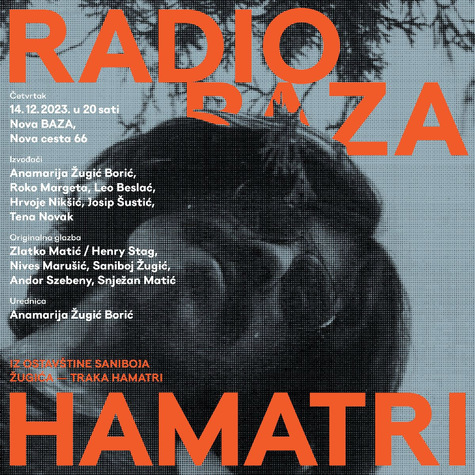
RADIO BAZA 2023 PRESENTS:
FROM THE HERITAGE OF SANIBOJ ŽUGIĆ: HAMATRI TAPE
THURSDAY, DECEMBER 14, 2023, AT 8 P.M.
NOVA BAZA, NOVA CESTA 66
JOSIP ŠUSTIĆ vocals and guitar, HRVOJE NIKŠIĆ Sanisint (a prototype synthesizer), and percussion, LEO BESLAĆ bass guitar and blockflute, TENA NOVAK violin, vocals, and percussion, ROKO MARGETA percussion, flute, tar, and tampura/swaramandal, and ANAMARIJA ŽUGIĆ BORIĆ vocals, string synthesizer, and percussion, perform original music by ZLATKO MATIĆ / HENRY STAG, NIVES MARUŠIĆ, SANIBOJ ŽUGIĆ, ANDOR SZEBENYI, and SNJEŽAN MATIĆ
MUSIC CURATOR: Anamarija Žugić Borić
The performance will be preceded by a short conversation between ANA KUTLEŠA, Trešnjevka Neighborhood Museum curator, and ANAMARIJA ŽUGIĆ BORIĆ, program editor, musician, and researcher.
THE ENTRANCE IS FREE OF CHARGE!
In the summer of 2012, ten years after the death of Trešnjevka electronic music composer, and electrical engineer – inventor Saniboj Žugić, a handful of archival materials related to his peculiar life and production was found in the building at the corner of Žumberačka and Ozaljska (ex Končareva) streets. Due to unfortunate circumstances, a great part of his heritage was stored in the damp basement of the building he lived in, and the long exposure to inadequate conditions had negative effects of the condition of the materials. Magnetic tapes, which contained, among others, Saniboj’s original music, suffered the most damage. In addition, electronic components and measuring and musical instruments he constructed himself were damaged, as well. (…)
After the above mentioned clearing up that took place in 2012, all magnetic tapes were listened to, and part of them were restored in the studio of composer and sound engineer Višeslav Laboš. Several magnetic tapes contain electronic music experiments, and one of them contains five completed original compositions under the title Saniboj, along with eleven more tracks, under the title Hamatri. In the meantime, two of Saniboj’s pieces were issued on the compilation Ex-Yu Electronica, Vol. IV: Once upon a time in the Balkans, published by Slovenian music publishing companies Monofonika and Subkulturni azil, curated by Višeslav Laboš, while other tracks waited for better days.
During processing and selection of Saniboj's heritage for the virtual collection of the Trešnjevka Neighborhood Museum, an idea was born to revive Saniboj's and neighborhood's alternative musical heritage in the form of a concert. The choice was to perform the never published or performed album entitled Hamatri from 1981/82, due to the significance the eponymous band had in the Zagreb alternative music scene, despite its short active period, which lasted from the late ‘70s until the beginning of the ‘80s.
Hamatri was perhaps the first world music band in Croatia, flirting with psychedelic and pop music, whose founder was musician Ante Perković, still active today. Soon after abandoning the original setup of Hamatri, its members Zlatko Matić (performing under the stage name Henry Stag) and Nives Marušić decided to try out with new members a more experimental musical expression, enhanced with sounds engineered by Saniboj Žugić’s synths.
A preserved tape of this unofficial ‘fraction’ of Hamatri, features Saniboj playing his mellotron, previously borrowed by the band Bijelo Dugme, and Sanisint. Besides Saniboj, Matić and Marušić were joined on some tracks by authors and performers Snježan Matić known as Sindhu, and a member of the original Hamatri Andor Szebeny. Slatko Matić, in the manner of the original Hamatri, played exotic and traditional intruments, such as sitar and various percussions, Nives Marušić sang and played violin and blockflute, and Andor Szebeny and Snježan Matić sang and played guitar. Since the band members alternated in composing songs, the album sounds heterogeneously at moments, varying instrumental and sung pieces, loose and more structured ones, and more experimental versus more classical forms, as well as psychedelic and pop expression. A demo was recorded in Saniboj's home studio during a yearlong collaboration with the above mentioned musicians. However, the album was never officially recorded nor published, because its members, in the meantime, followed different life paths, some of them moving to other European countries.
On this occasion, the album will be brought back to life by a group of musicians relatively close to this musical genre: Anamarija Žugić Borić on vocals, string synthesizer, and percussion, Josip Šustić on vocals and gutiar, Hrvoje Nikšić on Sanisint and percussion, Leo Beslać bass guitar and and blockflute, Tena Novak violin, vocals, and percussion, and Roko Margeta percussion, flute, tar, and tampura/swaramandal. Songs from this album, such as Incredible String Band and Eastern Delight, featuring titles that reflect the band's influences and genres, will be performed in orginal arrangements, along with a few interpretations. The concert will be an opportunity to bring closer to the audience Sanisint and its possiblities, presenting for the first time in fourty years this never publicly performed muscial gem.
Anamarija Žugić Borić
DESIGN: Zoran Đukić, Neva Zidić, Hrvoje Živčić
PHOTO: Luka Pešun
THE PERFORMANCE IS PART OF THE “TREŠNJEVKA NEIGHBORHOOD MUSEUM – LIVING HERITAGE” PROJECT, AND IT IS FINANCIALLY SUPPORTED BY THE MINISTRY OF CULTURE AND MEDIA OF THE REPUBLIC OF CROATIA AND THE CITY OF ZAGREB, THE CITY OFFICE FOR CULTURE AND CIVIL SOCIETY. BAZA’S ANNUAL PROGRAM IS SUPPORTED BY THE "KULTURA NOVA" FOUNDATION.
